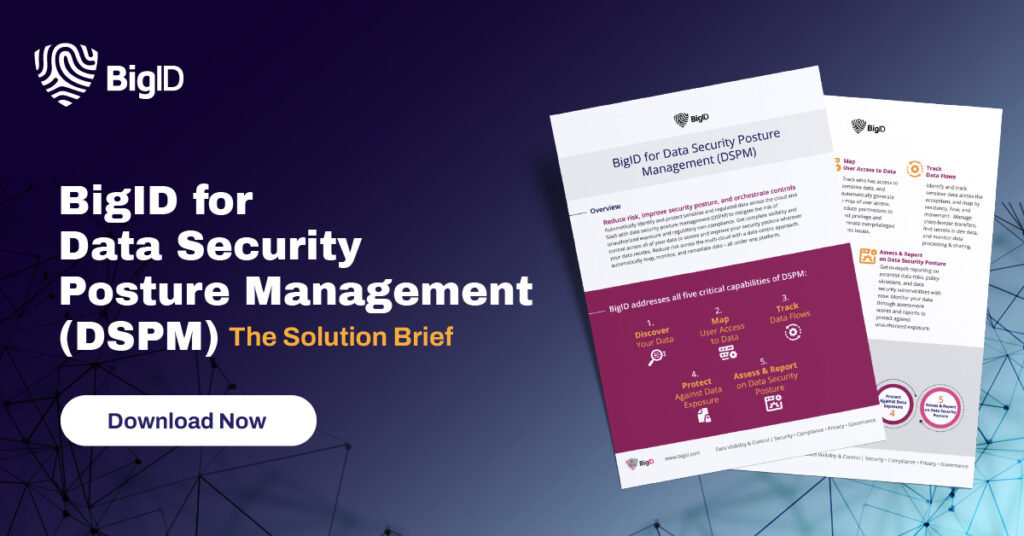In an era marked by relentless data breaches and evolving cybersecurity threats, the role of Data Security Platform Management (DSPM) has become paramount. As the digital landscape continues to expand, so do the vulnerabilities associated with sensitive data. This article delves into the promising future of DSPM, shedding light on its significance, the convergence with Data Security Platforms (DSPs), and its role in addressing contemporary and future data security challenges.
What is DSPM?
DSPM, or Data Security Platform Management, refers to the comprehensive management and oversight of data security platforms. It encompasses the strategies, processes, and technologies used to safeguard sensitive data, prevent unauthorized access, and ensure compliance with data protection regulations. DSPM aims to provide organizations with a holistic view of their data security landscape, enabling them to identify vulnerabilities, mitigate risks, and respond effectively to potential threats.
What is a Data Security Platform (DSP)?
A Data Security Platform (DSP) is an integrated solution designed to protect and manage sensitive data across an organization’s digital ecosystem. DSPs employ a combination of technologies such as data discovery, classification, encryption, access control, and monitoring to ensure data integrity and privacy. By centralizing data security functions, DSPs enable organizations to streamline their security efforts and establish a robust defense against cyber threats.
DSPM vs DSP: Understanding the Distinction
While DSPM and DSP share the overarching goal of safeguarding data, they serve distinct yet complementary purposes. DSPM focuses on managing and optimizing the various components of a DSP. It involves activities like policy enforcement, risk assessment, incident response, and ongoing monitoring. In contrast, a DSP is the technological foundation upon which DSPM operates, encompassing the tools and solutions that directly protect and manage data.

Why is DSPM Important?
The importance of DSPM cannot be overstated in an age where data breaches can have devastating consequences for organizations and individuals alike. As data proliferates and becomes more valuable, cybercriminals are continuously devising sophisticated methods to exploit vulnerabilities. DSPM offers several key benefits that make it an indispensable part of a robust cybersecurity strategy:
- Comprehensive Protection: DSPM provides a unified approach to data security, enabling organizations to identify and address vulnerabilities across their data landscape, regardless of where the data resides.
- Regulatory Compliance: With stringent data protection regulations like GDPR and CCPA in place, DSPM assists organizations in achieving and maintaining compliance, avoiding costly fines and reputational damage.
- Risk Mitigation: By proactively identifying and addressing security risks, DSPM helps mitigate potential breaches and data leaks, safeguarding an organization’s sensitive information.
- Operational Efficiency: Centralizing data security functions through DSPM streamlines processes, reducing complexity and improving overall operational efficiency.
DSPM in the Gartner Hype Cycle
Gartner’s Hype Cycle provides valuable insights into the adoption and maturity of emerging technologies. DSPM is on a trajectory that mirrors the stages of the Hype Cycle, with its current position representing the “Slope of Enlightenment.” As organizations increasingly recognize the value of DSPM, they are moving beyond initial implementation to explore its full potential. This includes optimizing data security strategies, integrating advanced analytics, and harnessing the power of AI to enhance threat detection and response.
Data Security Challenges Now and in the Future
The ever-evolving cyber threat landscape presents a myriad of challenges for organizations seeking to protect their sensitive data. From insider threats to ransomware attacks, the stakes are higher than ever before. Additionally, the rapid adoption of cloud technologies and the Internet of Things (IoT) introduces new areas of vulnerability.
Looking ahead, data security challenges are expected to become more complex as technology continues to advance. With the proliferation of data across diverse platforms and devices, the potential attack surface expands—expanding organization’s need for a robust and adaptive DSPM approach.
The Convergence of CSPM and DSPM
As organizations strive for comprehensive cybersecurity coverage, the convergence of Cloud Security Posture Management (CSPM) and DSPM emerges as a pivotal trend. CSPM focuses on securing cloud environments, ensuring proper configuration and compliance. By integrating CSPM and DSPM, organizations can create a seamless security ecosystem that safeguards data across on-premises and cloud infrastructures. This convergence offers a holistic approach to data security, addressing vulnerabilities at every layer of the digital landscape.
DSPM with BigID
In the forefront of the data security posture management evolution stands BigID, a leading innovator in data security and privacy management. BigID’s cutting-edge platform empowers organizations to proactively manage and protect their sensitive data. Leveraging advanced machine learning and AI, BigID enables accurate data discovery, classification, and identification, ensuring compliance with regulatory requirements like GDPR and CPRA.
Key capabilities of BigID’s DSPM solution include:
- Discover, categorize, and chart sensitive information throughout your environment: Effective Data Security and Privacy Management (DSPM) solutions should possess the capability to automatically unearth, label, and catalog both organized and unstructured data across on-premises and cloud settings, all within a unified user interface.
- Pinpoint potential risks related to access and exposure: Gain insight into which individuals have access to specific data, identify instances of data overexposure, and monitor data sharing, encompassing both internal and external access. Integrating access intelligence into the mix enables a reduction in insider threats, a hastening of zero-trust implementation, the achievement of least privilege principles, and an enhancement of data security from the access angle.
- Issue alerts for high-risk vulnerabilities: Visibility isn’t enough— DSPM solutions must possess the ability to autonomously trigger alerts based on risk levels, breaches of policies, and potential insider threats. These alerts should expedite the investigative process, enabling security teams to efficiently explore, resolve, and monitor security alerts and risk mitigation efforts.
- Simplify reporting and risk evaluation: At the core of DSPM lies a comprehension of risk, necessitating the capacity to generate reports detailing your risk posture, monitor progress (and setbacks), and track advancements. Conducting data risk assessments marks the initial step in gauging your position, supported by both comprehensive and high-level reports on your most valuable data on a consistent basis.
Get the gold standard in DSPM—schedule a free 1:1 demo with BigID today.


